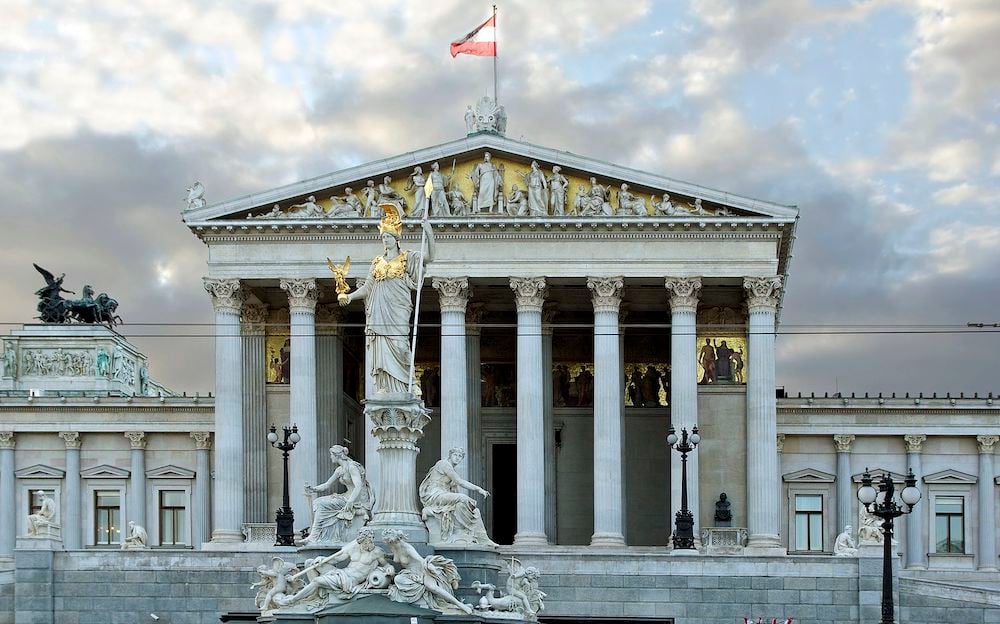
One of the most beautiful and impressive Parliament buildings anywhere in Europe is in the Austrian capital of Vienna, which has a distinct Greek flavor.
Standing in the city’s center since the nineteenth century, the Austrian Parliament impresses visitors to the city with its perfect resemblance to an ancient Greek temple.
Designed by architect Theophil Hansen and completed in 1883, the Austrian Parliament is one of the most characteristic examples of the classical Greek architectural renaissance of the nineteenth century.
Hansen decided to give the building its unmistakable Greek character because he wanted to revive Greek architectural style. During this period, called Neoclassicism, there was an awakened admiration for ancient Greece’s achievements, leading architects across Europe and the Americas to design buildings in the Classical style.
Architect of Austrian Parliament building inspired by Classical Greece
Designing holistically, Hansen was responsible both for the exterior and the interior of the parliament building. The result is a stunning recreation of classical Greece, with columns and pediments of white marble and frescoes along the walls of the entrance.
Hansen’s architectural choices were also certainly influenced by the industrialist and politician Nikolaus Dumba, who argued that the new Austrian parliament’s style should be classical.
The Austrian authorities thought at the time that classical Greek architecture was most appropriate for a parliament building because of its connection to the ancient Greeks and their legacy of democracy.
Hansen, relying on the drafts he had drawn up for the Zappeion Hall in Athens, was ready to implement his ideas and give Vienna a landmark which would capture the attention of the world.
His original plans included two separate buildings for the House of Representatives and the House of Lords, but for practical and financial reasons, it was decided to house both chambers in one building.
The “Athena Fountain” in front of the parliament was erected several years after the parliament building’s construction, creating an urban complex that gives the impression of being in the city center of ancient Athens.
Vienna, Austria home to historic Greek community
Vienna, Austria is also home to a historic Greek community. When we consider key communities of the Greek Diaspora, Vienna rarely comes to mind. However, if we are to consider historically significant communities for modern Hellenism, the Austrian capital should certainly be on the shortlist with its own Greek enclave, Little Greece.
The members of the Greek diaspora in Vienna hailed primarily from Macedonia and Epirus, as well as from Thracian cities, such as Constantinople and Philippopolis (the modern Plovdiv, Bulgaria).
The Vienna Greek school is even older than the Greek state itself, having been founded in 1804.
Aside from the educational efforts that were ongoing since that time, Vienna is where the Greek language first appeared in print in the modern world.
The actual site of the first Greek printing press is gone. Still, within the Greek Quarter, a stately baroque Viennese building houses the second Greek printing press, where Rigas Pheraios, the protomartyr of Greek Independence, edited the Greek newspaper Ephimeris.
See all the latest news from Greece and the world at Greekreporter.com. Contact our newsroom to report an update or send your story, photos and videos. Follow GR on Google News and subscribe here to our daily email!



